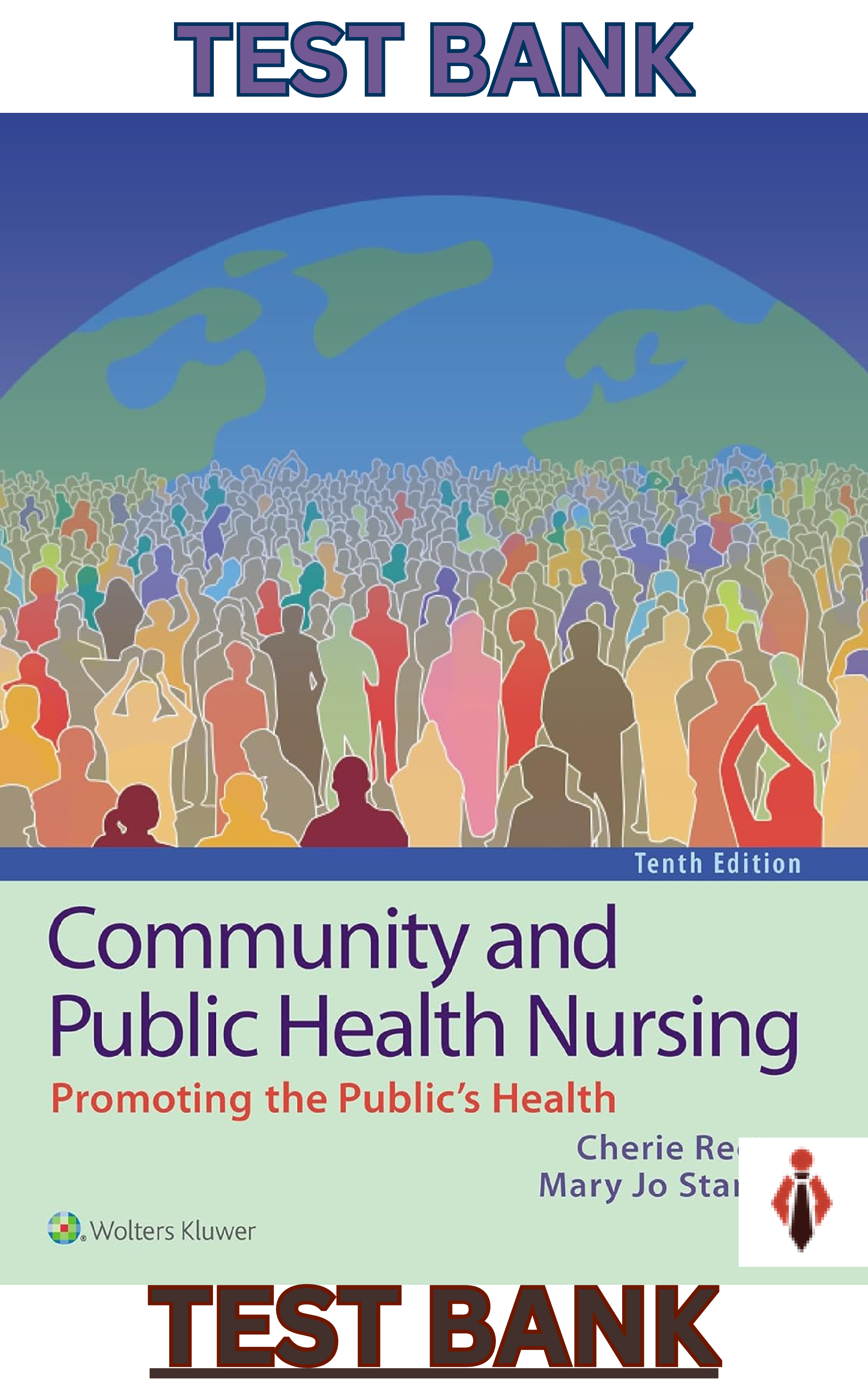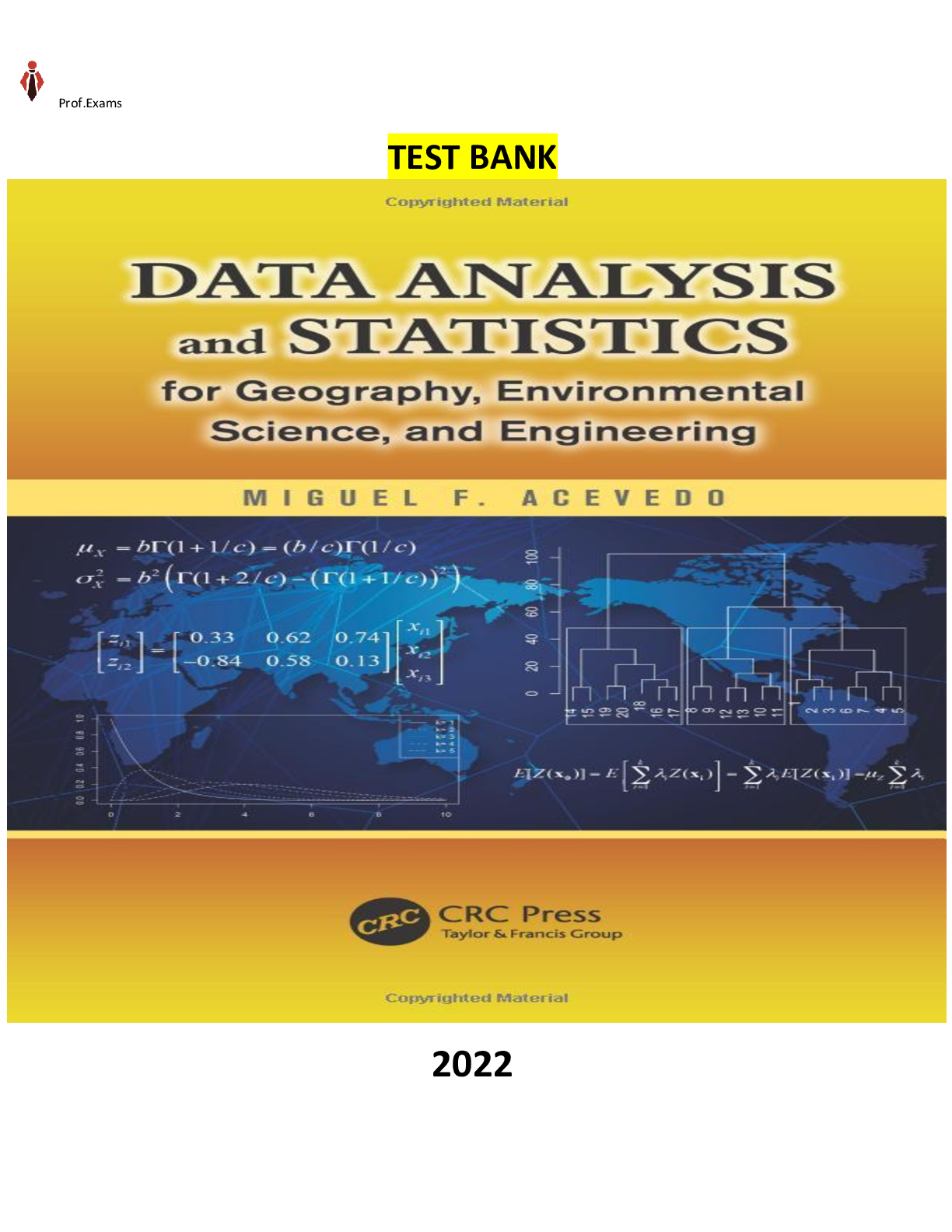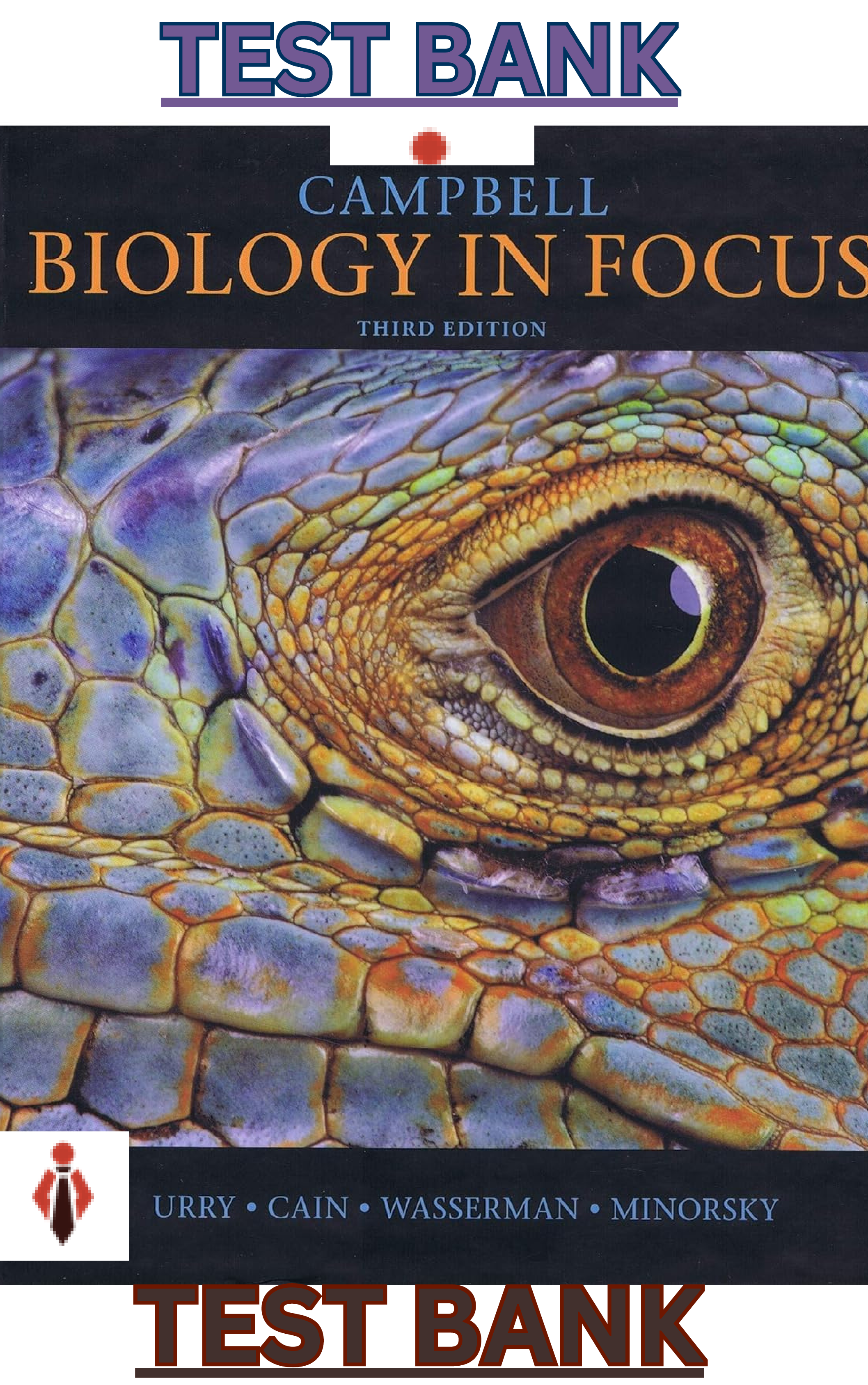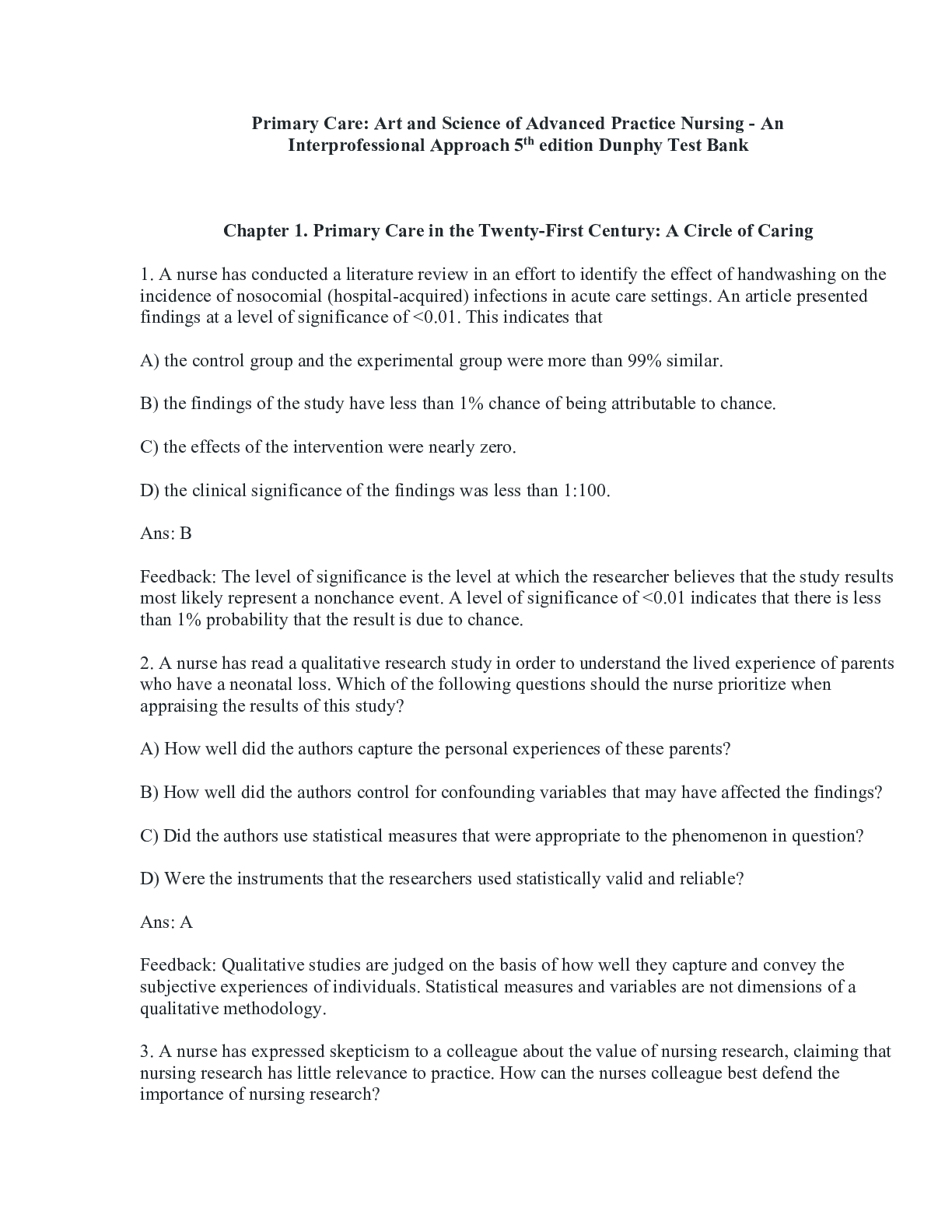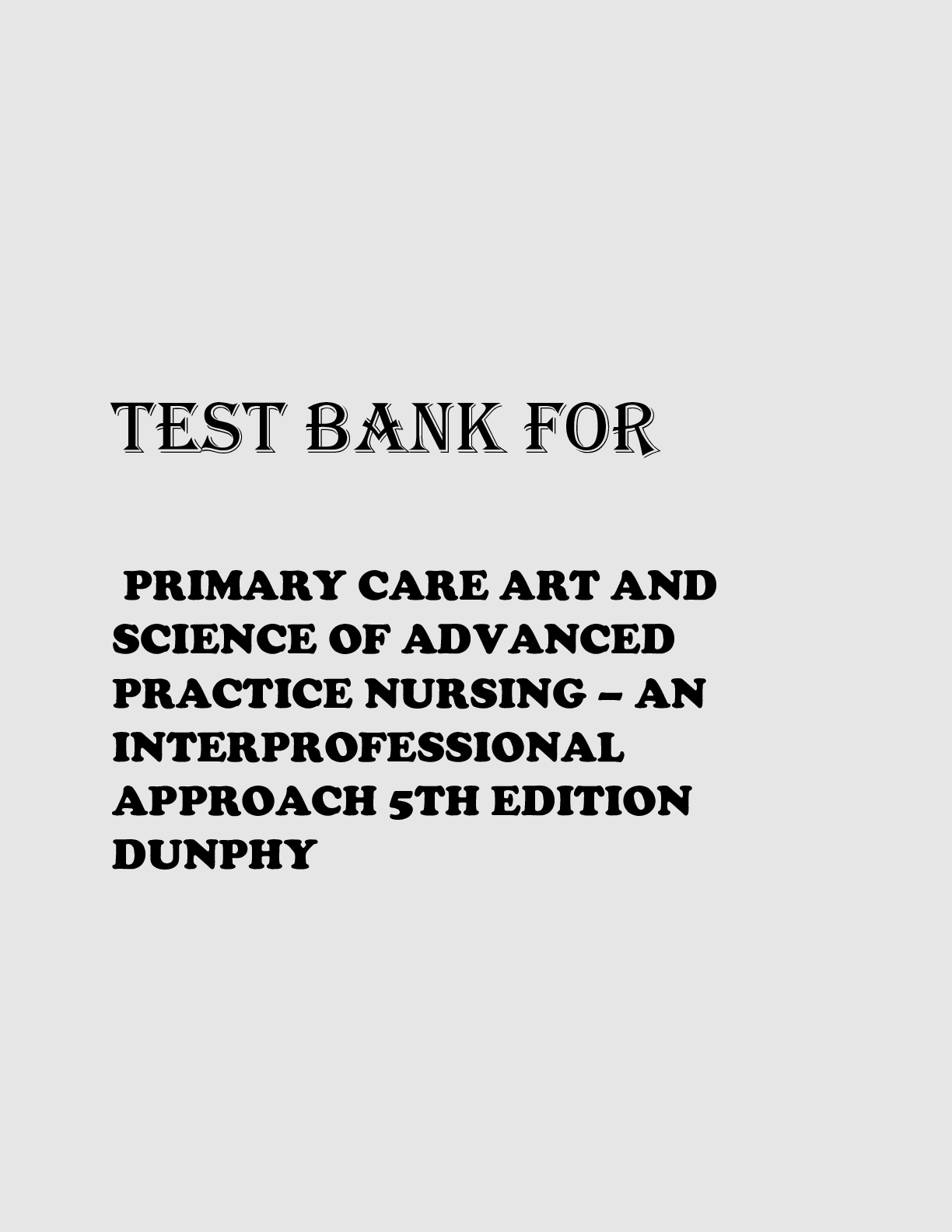Financial Accounting > TEST BANK > COMPLETE - Elaborated Test Bank for Auditing-The Art and Science of Assurance Engagements, 14ce.by A (All)
COMPLETE - Elaborated Test Bank for Auditing-The Art and Science of Assurance Engagements, 14ce.by Alvin Arens, Randal Elder, Mark Beasley, Chris Hogan & Joanne Jones.ALL Chapters1-20(578 pages) included and updated for 2023
Document Content and Description Below
COMPLETE - Elaborated Test Bank for Auditing-The Art and Science of Assurance Engagements, 14ce.by Alvin Arens, Randal Elder, Mark Beasley, Chris Hogan & Joanne Jones.ALL Chapters included and updated... for 2023 1The Demand for Audit and Other Assurance Services 2The Public Accounting Profession and Audit Quality 3Professional Ethics and Legal Liability 4Audit Responsibilities and Objectives 5Audit Evidence 6Client Acceptance, Planning, and Materiality 7Assessing the Risk of Material Misstatement 8Internal Control and COSO Framework 9Assessing Control Risk and Designing Tests of Controls 10Develop Risk Response: Audit Strategy and Audit Program 11Audit Sampling Concepts 12Audit of the Revenue Cycle 13Audit of the Acquisition and Payment Cycle 14 Audit of the Inventory and Distribution Cycle 15Audit of the Human Resources and Payroll Cycle 16Audit of the Capital Acquisition and Repayment Cycle 17Audit of Cash Balance 18Completing the Audit 19Audit Reports on Financial Statements 20 Other Assurance and Nonassurance Services Auditing: The Art and Science of Assurance Engagements, 15ce (Arens) Chapter 1 The Demand for Audit and Other Assurance Services 1.1 Define an assurance engagement. 1) What is the nature of the service provided when an auditor evaluates information using suitable criteria and issues a report that attests to the reliability of the information? A) internal audit engagement B) review engagement C) compilation engagement D) attestation engagement Answer: D Diff: 2 Learning Objective: 1-1 Define an assurance engagement. 2) The No-Name Agency conducts an independent service for a company to determine if its suppliers have complied with health and safety regulations, child labour guidelines, and other employee welfare issues. What type of service is No-Name providing? A) assurance B) attest C) review D) compilation Answer: A Diff: 2 Learning Objective: 1-1 Define an assurance engagement. 3) Which of the following is an example of an attestation engagement? A) accounting and bookkeeping services for the accounts B) an audit of internal controls over financial reporting C) preparation of the annual financial statements with notes D) completion of provincial and federal tax returns Answer: B Diff: 1 Learning Objective: 1-1 Define an assurance engagement. 4) When do individuals and organizations typically need assurance services? A) usually only when organizations obtain debt or other loans B) for five years from the start of an organization until debt is retired C) only when historical data, such as financial information, need to be audited D) whenever assurance is provided by a practitioner who is independent and unbiased Answer: D Diff: 2 Learning Objective: 1-1 Define an assurance engagement. 2 Copyright © 2022 Pearson Canada, Inc. 5) A major type of assurance service performed by large public accounting firms is A) auditing. B) reviewing. C) compilation. D) management consulting. Answer: A Diff: 1 Learning Objective: 1-1 Define an assurance engagement. 6) Two types of services provided by public accounting firms are audits and reviews. Discuss the similarities and differences between these two types of services. Which type provides the most assurance? Answer: Two primary types of services are audits of historical financial statements and reviews of historical financial statements. While both services involve the accumulation and evaluation of evidence regarding assertions made by management in the company's financial statements, an audit involves a more extensive examination and provides a higher level of assurance about the client's financial statements than a review. Diff: 1 Learning Objective: 1-1 Define an assurance engagement. 1.2 Define auditing and its purpose. 1) Which of the following illustrates the definition of auditing with respect to the evidence analysis process? A) accumulation and evaluation of evidence regarding assertions B) learning about different types of computing technology, such as mainframes C) writing an operational audit report that is tailored to the client's situation D) making sure that the auditor is competent and understands evidence gathering Answer: A Diff: 1 Learning Objective: 1-2 Define auditing and its purpose. 2) Auditing should be done by a qualified A) chartered accountant. B) certified management accountant. C) competent and independent person. D) professional accountant. Answer: C Diff: 2 Learning Objective: 1-2 Define auditing and its purpose. 3 Copyright © 2022 Pearson Canada, Inc. 3) Which of the following illustrates the definition of auditing with respect to the reporting process? A) accumulation and evaluation of evidence about balance sheet accounts B) reporting on the degree of correspondence between financial statements and ASPE/IFRS C) writing an operational audit report that is tailored to the client's situation D) making sure that the auditor is competent and understands evidence gathering Answer: B Diff: 2 Learning Objective: 1-2 Define auditing and its purpose. 4) In the audit of historical financial statements by PA firms, the criteria used are A) generally accepted auditing standards. B) relevant accounting frameworks. C) regulations of the Canada Revenue Agency. D) regulations of the provincial securities commissions. Answer: B Diff: 1 Learning Objective: 1-2 Define auditing and its purpose. 5) A large PA firm has assessed evidence collected during an engagement. Criteria used to assess the financial statements were International Financial Reporting Standards (IFRS). A high level of assurance was obtained. The type of engagement conducted was A) an audit. B) a review. C) management consulting. D) a compilation. Answer: A Diff: 2 Learning Objective: 1-2 Define auditing and its purpose. 6) The auditor and the entities being audited should agree on the criteria to be used in the audit A) well in advance before the audit starts. B) after the audit planning has been done. C) as they progress with the audit, as they can determine which criteria are most suitable. D) at the end of the audit. Answer: A Diff: 1 Learning Objective: 1-2 Define auditing and its purpose. 4 Copyright © 2022 Pearson Canada, Inc. 7) George had a conversation with the accounting personnel and documented information about how the accounting systems function. He has also placed copies of accounting forms in his files. George is performing which task? A) accounting procedures B) evidence gathering C) tax audit D) audit report preparation Answer: B Diff: 3 Learning Objective: 1-2 Define auditing and its purpose. 8) One of the reasons that an auditor must be competent is so that they can A) understand the engagement risks and the criteria used by the client. B) explain to staff how the bookkeeping should be done. C) record the transactions properly for the underlying records. D) capture the information properly in the computer files. Answer: A Diff: 2 Learning Objective: 1-2 Define auditing and its purpose. 9) One of the reasons that an auditor must be competent is so that they can A) select the type and amount of evidence to accumulate. B) explain to staff how the bookkeeping should be done. C) record the transactions properly for the underlying records. D) capture the information properly in the computer files. Answer: A Diff: 2 Learning Objective: 1-2 Define auditing and its purpose. 10) It is important for the auditor to be independent because A) otherwise, the auditor would not charge a fair rate to the client. B) otherwise, the auditor might not be as knowledgeable of the subject matter and the criteria. C) this will prevent bias in accumulating and evaluating evidence. D) the Canadian tax authorities require that the auditor be independent. Answer: C Diff: 2 Learning Objective: 1-2 Define auditing and its purpose. 11) As an external auditor is paid a fee by a client company, he or she A) is absolutely independent and may conduct an audit. B) may still be sufficiently independent to conduct an audit. C) is never considered to be independent. D) must receive approval from the relevant provincial securities commission before conducting an audit. Answer: B Diff: 1 Learning Objective: 1-2 Define auditing and its purpose. 5 Copyright © 2022 Pearson Canada, Inc. 12) The independent auditor's report is the A) communication of the outcome of auditor's evaluation to the users. B) set of audited financial statements. C) invoice of the auditor detailing the work they have performed. D) report presented to management about the possible improvements. Answer: A Diff: 2 Learning Objective: 1-2 Define auditing and its purpose. 13) In the audit of a corporate tax return, the CRA auditor should demonstrate competence in the use of A) external databases that contain economic statistics. B) standard personal and corporate tax preparation software. C) the Income Tax Act and accompanying regulations. D) database management software for the use of client-based research. Answer: C Diff: 1 Learning Objective: 1-2 Define auditing and its purpose. 14) In the audit of an individual's tax return, the criteria used would be A) an accounting framework. B) the Income Tax Act. C) the client's policies for taxable income. D) the auditor's judgment. Answer: B Diff: 2 Learning Objective: 1-2 Define auditing and its purpose. 15) In the audit of a corporate tax return, the report provided by the Canada Revenue Agency auditor would describe A) an opinion on the likelihood of tax return error. B) the likely accounting errors that could contribute to tax errors. C) management issues with respect to accurately reporting taxes. D) that the corporate income tax return is in compliance with the Income Tax Act. Answer: D Diff: 2 Learning Objective: 1-2 Define auditing and its purpose. 6 Copyright © 2022 Pearson Canada, Inc. 16) Figure 1-2 Use your knowledge of the definition of auditing and Figure 1-2: Audit of a Corporate Tax Return to explain how an auditor would conduct a Corporate Tax Return audit. Answer: First, the concept of a competent, independent person requires that the practitioner who is conducting an assurance engagement should have "adequate proficiency," which means that the tax auditor should be competent in the fields of taxation and the fields that need to be assessed, such as accounting, information systems, data management and access and internal controls. The auditor should also use due care and have an objective state of mind. This means that the auditor should be independent of the client and do their best using their skills when conducting the audit. The second part of Figure 1-2 relates to the accumulation and evaluation of evidence using a risk-based approach. This means that the auditor would collect evidence based upon risks of violations in the tax return by the client. The next three parts are connected. The auditor determines the correspondence of the information provided by the client (which could be the financial statements, tax return and the quality of the calculations within the tax return) to established criteria (the Income Tax Act). Finally, the auditor issues a report (Notice of Assessment) to summarize the findings. Diff: 2 Learning Objective: 1-2 Define auditing and its purpose.. [Show More]
Last updated: 2 years ago
Preview 1 out of 578 pages

Buy this document to get the full access instantly
Instant Download Access after purchase
Buy NowInstant download
We Accept:

Reviews( 0 )
$29.00
Can't find what you want? Try our AI powered Search
Document information
Connected school, study & course
About the document
Uploaded On
Apr 13, 2023
Number of pages
578
Written in
Additional information
This document has been written for:
Uploaded
Apr 13, 2023
Downloads
0
Views
102


